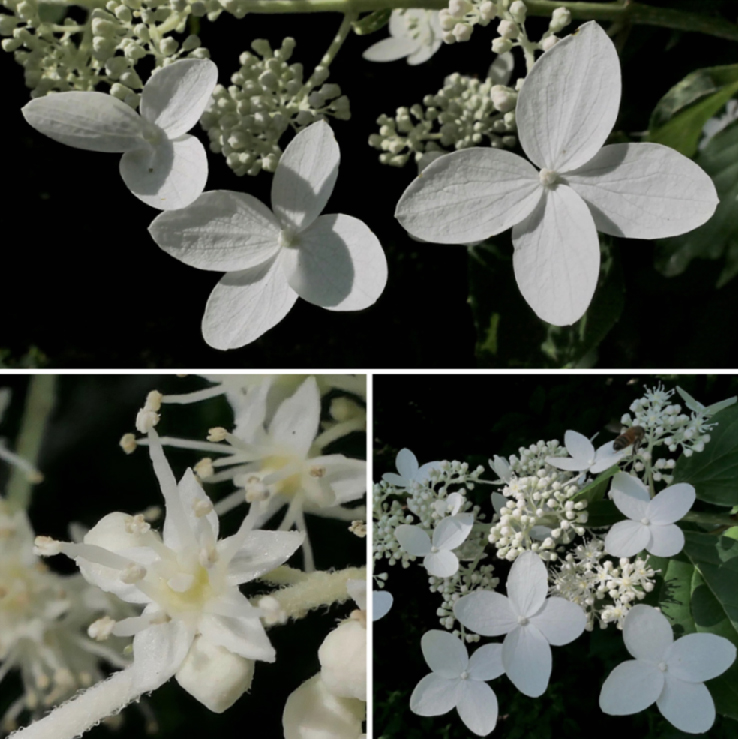There are certain times of the year when the Arnold Arboretum must be inhaled to round out the full experience. Right now, different parts of the Arboretum are dominated by aromatic compounds volatilizing from the flowers of linden trees (Tilia spp.) and the magnificent panicle hydrangea (Hydrangea paniculata). With temperatures high and the sun intense, now is the perfect time to breathe deeply.
There are two extraordinary accessions of Hydrangea paniculata on offer in the Bradley Rosaceous Collection (14714*A and 14714-1*A)—you can’t miss them. These magnificent specimens are covered in white flowers (and swarming with bees and other insects providing pollinator services). 14714*A arrived in Boston in 1892 as a seed collected by Charles Sprague Sargent during his expedition to Japan and has been growing in this spot (once it graduated from the nursery) ever since. 14714-1*A is literally a chip off the old block, having been propagated as a cutting from 14714*A in 1905.

A wonderful thing about hydrangeas is their floral dimorphism; there are two distinct types of flowers produced on each plant (990-80*B, lower right image). The more numerous small fertile flowers (990-80*B, image lower left) and the less numerous showy flowers (990-80*B, upper image) that are often referred to as sterile flowers (problematically, since they are often perfectly fertile!). It is assumed that the evolution of showy “sterile” flowers in hydrangeas was driven by the benefits of attracting more pollinators to the inflorescences, or as Charles Darwin put it in 1877, “by rendering the flower-heads conspicuous to insects.” I buy it. Interestingly, the “sterile” flowers typically are four-parted while the fertile flowers are five-parted. Also, the showy parts of the “sterile” flowers are not petals (as is the case with the small fertile flowers), but rather, are highly enlarged sepals.